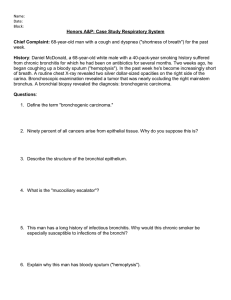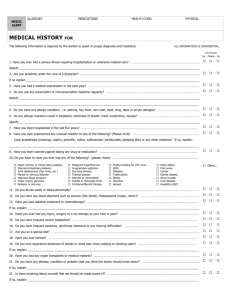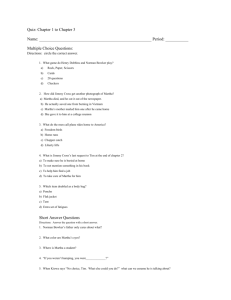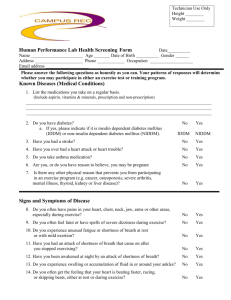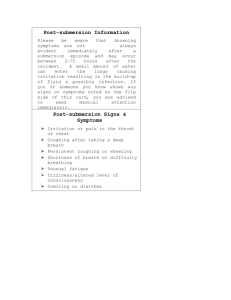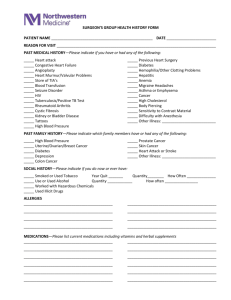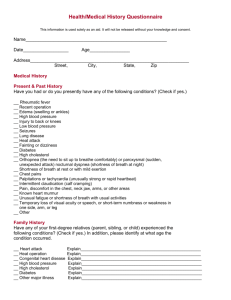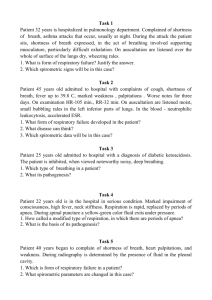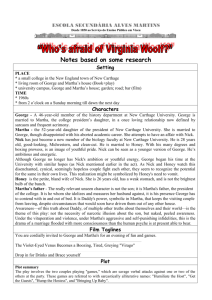Chief Complaint: 72-year-old man with a cough and dyspnea
advertisement
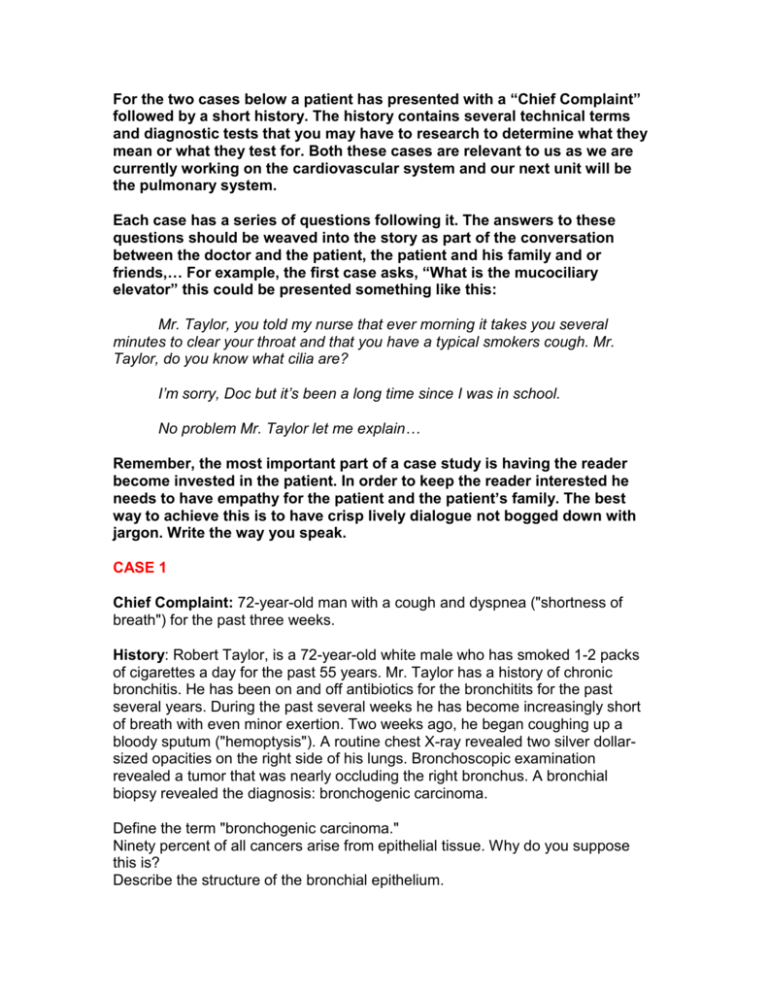
For the two cases below a patient has presented with a “Chief Complaint” followed by a short history. The history contains several technical terms and diagnostic tests that you may have to research to determine what they mean or what they test for. Both these cases are relevant to us as we are currently working on the cardiovascular system and our next unit will be the pulmonary system. Each case has a series of questions following it. The answers to these questions should be weaved into the story as part of the conversation between the doctor and the patient, the patient and his family and or friends,… For example, the first case asks, “What is the mucociliary elevator” this could be presented something like this: Mr. Taylor, you told my nurse that ever morning it takes you several minutes to clear your throat and that you have a typical smokers cough. Mr. Taylor, do you know what cilia are? I’m sorry, Doc but it’s been a long time since I was in school. No problem Mr. Taylor let me explain… Remember, the most important part of a case study is having the reader become invested in the patient. In order to keep the reader interested he needs to have empathy for the patient and the patient’s family. The best way to achieve this is to have crisp lively dialogue not bogged down with jargon. Write the way you speak. CASE 1 Chief Complaint: 72-year-old man with a cough and dyspnea ("shortness of breath") for the past three weeks. History: Robert Taylor, is a 72-year-old white male who has smoked 1-2 packs of cigarettes a day for the past 55 years. Mr. Taylor has a history of chronic bronchitis. He has been on and off antibiotics for the bronchitits for the past several years. During the past several weeks he has become increasingly short of breath with even minor exertion. Two weeks ago, he began coughing up a bloody sputum ("hemoptysis"). A routine chest X-ray revealed two silver dollarsized opacities on the right side of his lungs. Bronchoscopic examination revealed a tumor that was nearly occluding the right bronchus. A bronchial biopsy revealed the diagnosis: bronchogenic carcinoma. Define the term "bronchogenic carcinoma." Ninety percent of all cancers arise from epithelial tissue. Why do you suppose this is? Describe the structure of the bronchial epithelium. What is the "mucociliary escalator"? This man has a long history of infectious bronchitis. Why would this chronic smoker be especially susceptible to infections of the bronchi? Explain why this man has bloody sputum ("hemoptysis"). Explain why this man has shortness of breath ("dyspnea"). If you examined the cancerous tissue under the microscope, how might the cells differ in appearance from normal bronchial epithelium? Why is the surgical removal of a lung cancer so ineffective in halting the disease? CASE 2 Chief Complaint: 74-year-old woman with shortness of breath and swelling. History: Martha Wilmington, a 74-year-old woman with a history of rheumatic fever while in her twenties, presented to her physician with complaints of increasing shortness of breath ("dyspnea") upon exertion. She also noted that the typical swelling she's had in her ankles for years has started to get worse over the past two months, making it especially difficult to get her shoes on toward the end of the day. In the past week, she's had a decreased appetite, some nausea and vomiting, and tenderness in the right upper quadrant of the abdomen. On physical examination, Martha's jugular veins were noticeably distended. Auscultation of the heart revealed a low-pitched, rumbling systolic murmur, heard best over the left upper sternal border. In addition, she had an extra, "S 3" heart sound. What is causing this murmur? What is causing her "S3" heart sound? Is her history of rheumatic fever relevant to her current symptoms? Explain, i.e., does rheumatic fever effect the heart, does it have long term consequences? A chest X-ray reveals a cardiac silhouette that is normal in diameter. Does this rule out a possible problem with Martha's heart? Explain, i.e. just because the heart is normal size does it mean that everything is OK? You examine Martha's abdomen and find that she has an enlarged liver ("hepatomegaly") and a moderate degree of ascites (water in the peritoneal cavity). Explain these findings. Examination of her ankles reveals significant "pitting edema." Explain this finding. She is advised to wear support stockings. Why would this help her? What is the general term describing Martha's condition? How might Martha's body compensate for the above condition?
